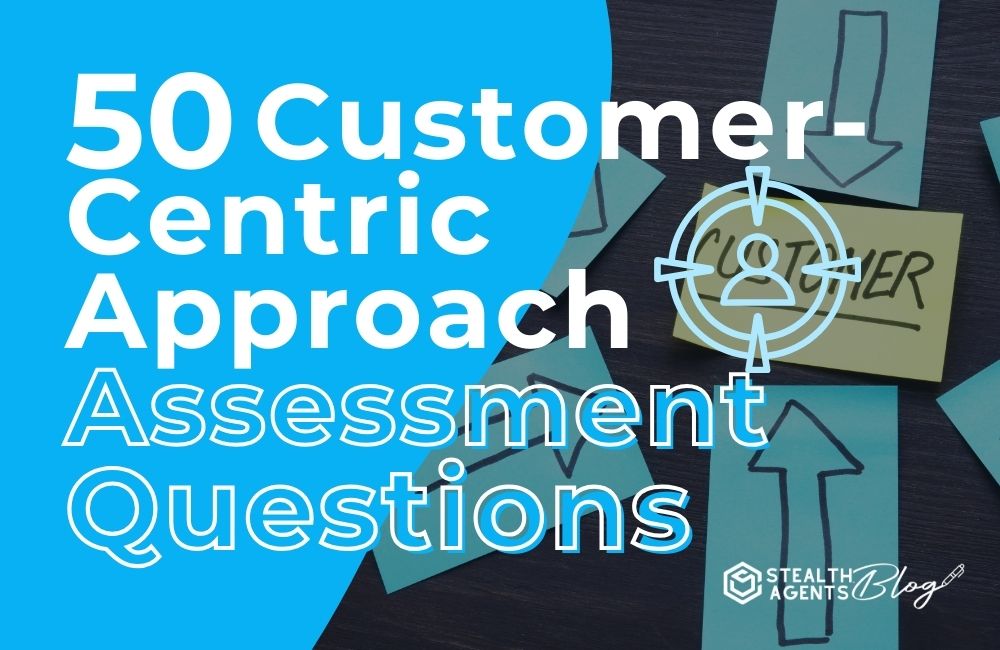Customer-Centricity isn’t just a buzzword; it’s a game-changer in today’s business landscape. With customer expectations evolving at breakneck speed, the only way to stay ahead of the curve is to keep your customers at the heart of everything you do. But what does that really mean? It’s about more than just polite service or a comprehensive FAQ section; it’s a profound shift in how you view your customers and how your entire business operates.
This detailed listicle offers a deep dive into adopting a truly customer-centric approach. With 50 thought-provoking questions, this comprehensive assessment helps you evaluate and enhance your customer engagement strategies.
Additionally, explore Candidate Creativity Assessment Questions to ensure your team includes innovative thinkers who can elevate your customer-centric initiatives. Let’s transform the way you do business!
Start with Why: The Essence of Customer-Centricity
Every journey begins with a single step, and in the world of customer service, understanding the ‘Why’ is paramount. Here are the elemental questions that can shape the foundation of a customer-centric philosophy for your brand.
Establishing the Purpose
- Why does our business exist?
- What’s our core mission beyond profit?
- If our business disappeared tomorrow, how would our customers be affected?
- How does our vision align with our customers’ needs and desires?
- What role does our service play in the daily life of our customers?
Enhancing customer engagement starts with a clear, customer-focused mission that drives every decision and action.
Customer Understanding
- Who are our ideal customers?
- Can we segment our customers effectively?
- What are the core needs and wants of each customer segment?
- How do customers prefer to communicate with us?
- What are the common pain points our customers express?
Understanding your customers isn’t just about data; it’s about empathizing with their needs and preferences.
Internal Alignment
- Are our team members aware of our customer-centric vision?
- How do we empower employees to make customer-focused decisions?
- What systems are in place to gather and act on customer feedback?
- Are our company’s goals synced with our customer-centric vision?
- Do we celebrate customer service successes as much as we do sales?
An internal culture that supports customer-focused initiatives is critical to success.
Competitive Advantage
- What sets our customer service apart from our competitors?
- Can we act on customer feedback faster than our rivals?
- How do we innovate with customers in mind?
- Are our customer service standards higher than industry norms?
- Do we foster a community around our brand that supports our customers?
Customer-centricity is not just a philosophy; it’s a key driver for sustainable competitive advantage.
Intermediate Dive: Frameworks and Strategies
With a clear understanding of the ‘why,’ it’s time to develop the ‘how.’ These questions focus on the actionable steps needed to embed customer-centric practices in your operations.
Strategy Development
- What’s our current customer satisfaction and how do we measure it?
- How often do we review our customer service strategy?
- Can our strategy adapt to rapidly changing customer expectations?
- How do we encourage customer loyalty beyond transactions?
- In what ways do we include customers in the co-creation of value?
Developing a customer-centric strategy means being proactive, nimble, and inclusive.
Process Improvement
- Are our processes designed from the customer’s point of view?
- How do we reduce customer effort in their interactions with us?
- What measures are in place to prevent recurring customer issues?
- Are we utilizing technology to enhance our customer service delivery?
- How do we ensure every customer-facing process is standardized for quality?
Streamlining processes from a customer’s perspective can significantly improve their experience.
Training and Development
- What training do we provide to our customer-facing staff?
- Do we have a continuous learning approach to improving customer service?
- In what ways do we cross-train employees to handle different customer needs?
- How do we incorporate customer service excellence in our onboarding process?
- Are our customer service staff incentivized to prioritize customer satisfaction over speed?
Ongoing training is vital in helping your team develop the skills to deliver exceptional customer service.
Metrics and KPIs
- Which KPIs do we use to measure customer satisfaction?
- How do we balance qualitative and quantitative feedback from customers?
- What’s our Net Promoter Score (NPS) and how do we use it to improve service?
- Are our KPIs aligned with our customer service goals?
- How transparent are we with our customers about performance metrics?
Choosing the right metrics and being transparent about them is key to demonstrating your commitment to customer service.
The Advanced Level: Continuous Improvement
A customer-centric approach is not a destination but a journey. These advanced questions focus on the continuous refinement required to maintain and evolve your customer experience.
Customer Feedback
- How do we actively seek out customer feedback at every touchpoint?
- Do we make it easy for customers to voice their concerns and compliments?
- What’s our process for following up on customer feedback?
- Are there channels for honest customer feedback that bypass traditional customer service?
- Have we ever implemented a change based on a single piece of customer feedback?
Listening to your customers is simple; acting on what you hear is transformative.
Adaptability and Agilty
- How do we respond to sudden shifts in customer preferences or expectations?
- Are we prepared for the next big trend and how are we monitoring for it?
- What measures do we have in place to quickly rectify a service failure?
- How do we maintain consistency across different customer service channels?
- Is there room for creativity within our customer service guidelines to deal with unique situations?
An agile approach to customer-centricity will keep you resilient and responsive to evolving customer needs.
Conclusion
50 questions may seem like a lot, but the journey to becoming a truly customer-centric organization is extensive. It involves every department, every employee, and every process in your company. But the rewards – greater customer loyalty, higher lifetime value, and differentiation from competitors – are well worth the effort.
As you work through these queries, remember that the goal is not just to assess but to act. Take the insights you gain and use them to transform the way you engage with your customers. After all, the best customer service doesn’t come from a manual; it comes from a mindset. Let’s not just think about customer-centricity; let’s be about it. Your customers – and your bottom line – will thank you.











